| |
|
|
Send This E-newsletter to
Everyone You Know
Cathy Harris Releases New Book "Overcoming Food Deserts in Your Community: How To Start A Home, School, or Community Garden, Food Co-op or Food Coalition"
and New National Food Project
"Virtual Organic Garden Clubs"
Press Release
For Immediate Release
June 15, 2017
CONTACT:
Angels Press
Attn: Cathy Harris, CEO and President
P.O. Box 19282
Austin, TX 78760
(512) 909-7365
Cathy Harris, Austin business owner and National Non-GMO Health and Wellness Expert, is releasing a new book entitled
The book release will go hand in hand with the virtual food project to help families understand what they need to do to start gaining access to good, clean, organic foods. We will teach families how to grow foods at homes, schools or community gardens, food co-ops or food coalitions to sell to families in GOOD FOOD BOXES, grocery stores, farmer's markets, restaurants, catering companies, roadside stands, etc.
Everyone is urged to use meetup.com to set up local food discussion meetings in their communities, however, t
here will be monthly "Virtual Organic Gardening Clubs" meetings on third Tuesdays of each month from 7:00-8:30 p.m. (CST) by phone at www.FREEConferenceCall.com. These meetings will be Masterminds, Think Tanks and Classrooms.
Since most foods today or 90% that are processed (or have been altered), contain Genetically Modified Organisms (GMOs), which have no nutritional value, it should be everyone's goal to grow their own foods to make sure foods are safe to eat; to fight diseases and to cut down on grocery bills.
Also View Our Press Release
"90 Day Health Challenge"
Can Women Turn Off the Stove for 90 Days to Save Their Family?
Can Men Stop Watching Sports for 90 Days to Save Their Family?
"The Cathy Harris Show"
Presents
Black Farmers
Panel Discussion Update
The Virtual Organic Garden Clubs Movement
will be merging forces with the
Black Farmer's Movement...
...MORE INFO COMING SOON...
"The Cathy Harris Show" presented a "Black Farmers Panel Discussion Update" on Wed., Jun. 14, 2017, 7:00-9:00 p.m. (EST).
Guest Panelists included:
Michael Stovall, Lawrence County Alabama, Co-founder, Independent Black Farmers Association. He filed his first discrimination complaint against USDA in 1993. Latest complaint filed in 2016.
For more info email [email protected] or call (256) 1752.
Eddie Slaughter, Marion County, GA, Co-founder of the African American Agriculturalist Association. He filed his first complaint against USDA in 1980. Latest complaint filed in 2016. His Black farmer organization is still fighting for the many Black farmers waiting for justice from the USDA.
For more info email [email protected] or call (229) 649-2243.
Muhammad Robbalaa, Leflore County, OK, Co-founder of the African American Agriculturalist Association. He filed his first complaint against USDA in 1983. Muhammad has been a leader for justice, as others mentioned above, in their counties, state and nationally.
For more info email [email protected] or call (918) 721-3031.
Lawrence Lucas, Founding member and former President of the USDA Coalition of Minority employees since May 1994. Now President emeritus of the coalition. Is a native of Washington, DC, and now living in Pennsauken, NJ, outside Philadelphia, PA and is still in the struggle for justice for minority farmers, especially Black farmers and USDA employees.
For more info email [email protected] or call (856) 910-2399.
The USDA Coalition of Minority Employees and the Black farmers, representing 13 southern states, in the southern region, for decades, have questioned the commitment of USDA to resolve its culture of racism, sexism, harassment, intimidation, reprisal against those who speak out and more.
We have also, jointly, questioned the leadership of many....president after president, congressional leaders after congressional leaders, secretary of agriculture after secretary, and there has been little to no systemic change at USDA.gov over the years
Lawrence Lucas, President emeritus
(856) 910-2399
|
ELEVENTH HEALTH ACTION STEP
for "The Essential Women's Movement for African American Women"
"Virtual Organic Garden Clubs"
Website:
10 Steps To Start Growing
Your Own Foods
Step 2 - Set Up "Virtual Organic Garden Clubs" and  Hold Monthly Meetings: Hold Monthly Meetings:
There are two types of garden clubs - a FLOWER and PLANT garden club and a FOOD garden club. Of course we are dealing with growing our own foods. If you can grow flowers and plants, then there is a good chance that you can also grow foods - so get started today.
I also have my own garden club at
"Cathy Harris Garden Club"
(
www.CathyHarrisGardenClub.com
), where I will be posting relevant and timely YouTube.com videos and posts to help you on your gardening journey. You can get a FREE blog also at
www.blogger.com
or
www.wordpress.com
or pay $12.00 a year for your own domain name.
Try to use meetup.com groups, which are $19.99 a month for 1 to 3 groups, to set up local garden clubs in your cities. I have set up
"Virtual Organic Garden Clubs" on facebook at
I will be holding
monthly virtual garden club meetings for this new project
"Virtual Organic Garden Clubs" by phone at
www.FreeConferenceCall.com and by video at
www.zoom.us (video training program for $16.99 a month), every third Tuesday
(starting on Tuesday, July 18, 2017, 7:00-8:30 (CST).
I suggest others do the same.
Everything will be posted on the
link on my website or go to the
facebook.com group and join it so you can receive all the latest announcements. These meetings by phone and video will be
Masterminds,
Think Tanks and
Classrooms and we will also educate everyone on "
The Cathy Harris Show, through e-newsletters, articles, blogs, etc.
Our only stipulations are you should not be involved in Network or Multi-level Marketing (aka Pyramid Schemes).
Step 3 - Know What Region You Live In:
Find out which foods grow in your region. Do you know your growing zone? Use the USDA.gov Plant Hardiness Zone Map to find out. You are lucky if you live in a location where there is a longer food growing season, unlike people who live up north or in the midwest in colder climates.
In Austin, TX, where I live, there are two climates, hot and hotter, so the climate here is different than the climate anywhere else in the state of Texas.
Also once you find out your region, research which pests thrive in your region, so you will know how to control them once you spot them on your flowers, plants or foods.
Step 4 - Make A List of the Foods You Enjoy:
You should first grow the foods you will be eating in your own home then branch out and grow foods you can sell. Just because you enjoy a certain food, doesn't mean you need to grow that particular food.
First conduct your research and figure out if the food is good for you and which diet you will eat. Most Americans eat the
Standard American Diet (also called "SAD") and that along should tell you something. It's full of GMO processed foods.
You also have the vegetarian diet, vegan diet, gluten
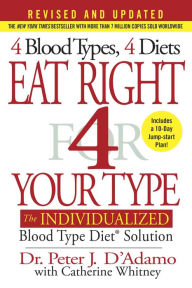 free diet, blood type diet, etc.
I only eat foods for my blood type so invest in the book
"Eat Right 4 Your Blood Type"
and eat foods specifically for your blood type, which will give you tons of energy and vitally.
Green leafy vegetables are the most "
nutrient-dense" foods, however, green cruciferous vegetables blocks iodine and causes hypothyroidism, so this is why 90% of women have thyroid issues. If you eat these foods, you also need to take
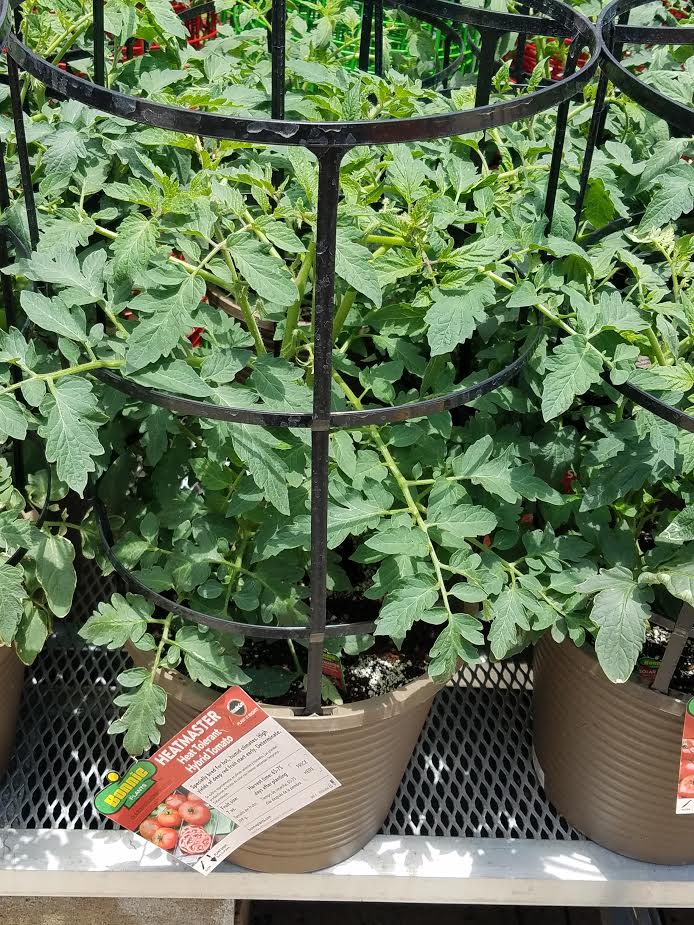 additional iodine supplements.
Besides green leafy vegetables, the next best foods to eat are antioxidants - the blue, purple, red, orange and yellow foods, but they should only be eaten in as natural form as possible (juiced, steamed, blended, etc.) in order to maintain a "
nutrient-dense"
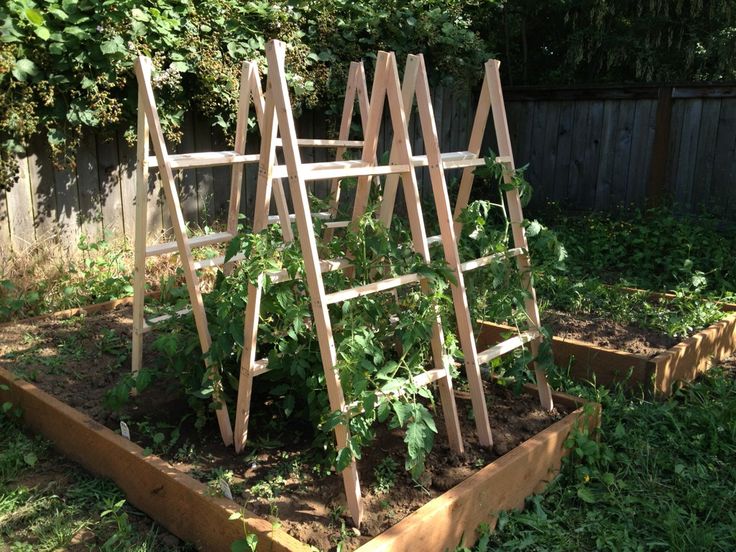
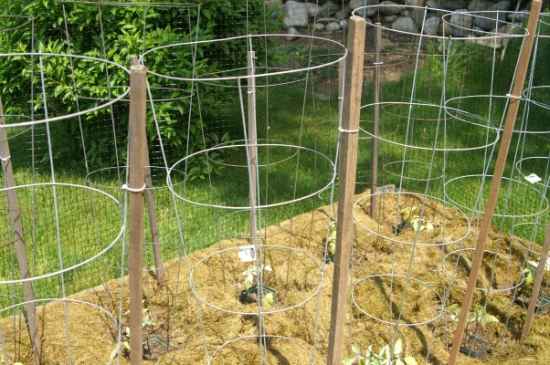 base.
Many people get into gardening in the first place to grow big ripe red tomatoes. Eventually after starting out in a pot or container, inside or outside of your home, you will probably need to get a tomatoe trellis so the foods can grow upwards, which will give you more space.
You can actually make these yourself like the above picture. Some people start off growing tomatoes in homes then plant them outside in the ground, in raised beds or in bigger pots and containers.
I don't eat tomatoes because it's not allowed on my B blood type diet, but my mate eats them so we will still be growing tomatoes.
Step 5 - Learn Where You Can Grow Foods?
If you can look out your front, side or back window of your home and see your own plot of land, then you are all set. If you don't feel comfortable growing foods in your native soil, then think about raised beds, pot or container gardening.
This way you can
 control the type of soils you use. So understand that you can grow foods in front and backyard gardens, on patios, balconies, porches, rooftops, and in kitchens in pots and containers.
To find out if your native soil is okay for growing foods, have the soil tested for pH, nutrients, and
 lead (heavy metal) contamination by a soil testing
laboratory in the fall. You can find these by asking your
garden centers for information.
If your site is contaminated, the simplest solution may be to find another site or try raised bed, pot or container gardening with different soil. Always use organic soil, which helps the environment.
The goal is to grow foods from the ground up using organic soils, seeds (or seedlings or transplants). If you have to buy a
 seedling/transplant plant because you don't have access to organic seeds, then wash the root off carefully before replanting it in organic potting mix in pots or containers or organic soil in raised bed gardens or in the ground.
You need to understand when you plant these transplants that have already started growing, most
 places like homedepot.com, lowes.com and other local gardening centers, used fertilizer that wasn't organic, which means these fertilizers will do nothing, but continue to corrupt your soil and the environment so it's the goal of our new project to help your family GO ORGANIC from the ground up.
Step 6 - Set Up Job's Programs Through Food Co-ops and Food Coalitions:
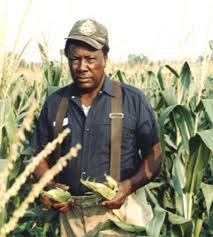 Instead of just growing the foods at homes, some families will be in a position to grow QUICK-GROWING foods to sell to grocery stores, farmer's markets, restaurants, catering services, roadside stands, etc., especially in food co-ops, food coalitions and other food projects. Instead of just growing the foods at homes, some families will be in a position to grow QUICK-GROWING foods to sell to grocery stores, farmer's markets, restaurants, catering services, roadside stands, etc., especially in food co-ops, food coalitions and other food projects.
The problems with food coalitions will be:
- Not having effective leaders.

- Lack of volunteers. We need volunteers, but they must eventually be paid.
- Lack of participation from churches. Churches will have a hard time giving up the land so that we can grow foods. We need land to grow foods on.
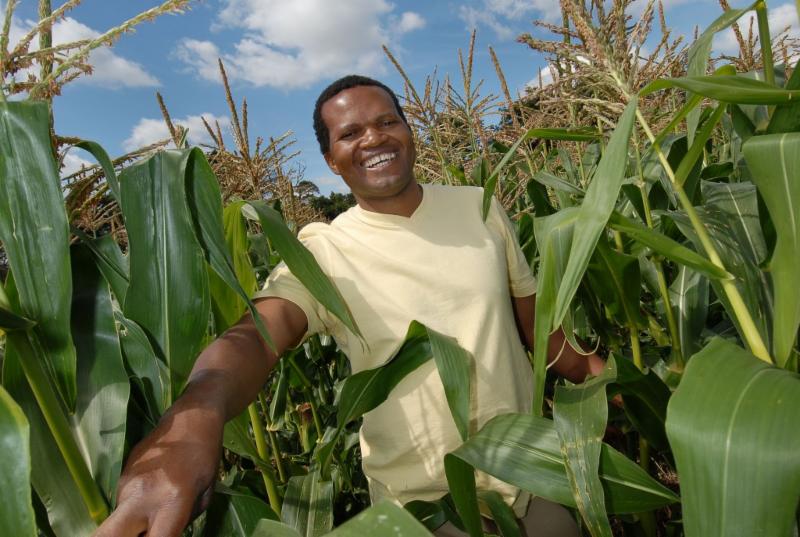 There will be tons of business opportunities around growing foods. You can become a
Gardening Consultant and have your clients meet you at garden centers so you can help them find the right products (organic soils and potting mix, organic seeds, gloves, pots, containers, tools, etc.) or you can meet them at their homes and build front or backyard gardens, or show them how to grow foods on patios, balconies, porches, rooftops, and in kitchens in pots and containers. Then you can
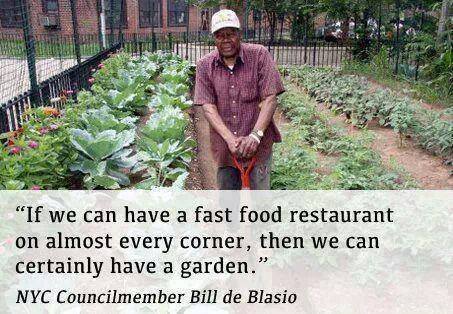 come by every week to maintain them or just give classes in communities or at homes.
The sky is the limit!
Many families will pay you for these services, just like most black women who have homes pay $40.00 (or more) every two weeks for guys to come and mow their lawns.
This field would also be good for black women or youth entrepreneurs, especially
pre-teens and
teenagers with green thumbs, since most women, especially single parents, would feel more comfortable with other women, or teenagers coming around -- instead of men.
Again, the sky is the limit!
Try to work with your community to set up job's programs and help create business opportunities, especially for our youth who can't find work in the summer and former prisoners. And don't forget
we are creating a SELF-SUFFICIENCY MOVEMENT. We are finished with begging!
Step 7 - Set Up 'Garden Based' Education in Schools:
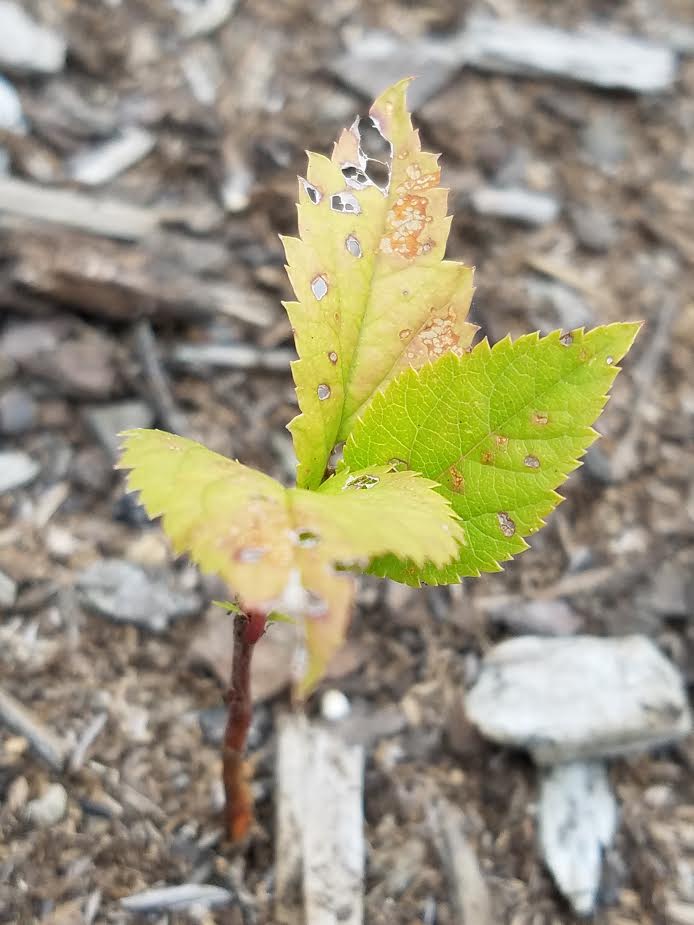 This is an apple tree coming up from plain apple seeds that my friend' grandson planted so get your kids excited about growing foods. This is an apple tree coming up from plain apple seeds that my friend' grandson planted so get your kids excited about growing foods.
It will be imperative to get 'garden-based' education started in most schools, so reach out to parents and others heavily involved in www.PTA.org or school board meetings or who are members of 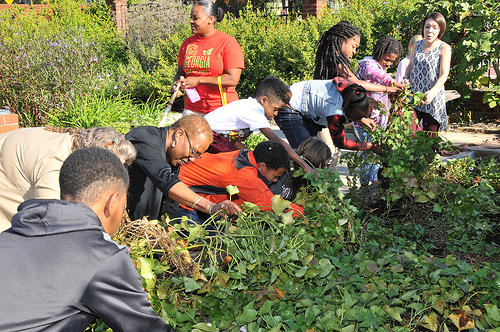 school boards, to implement this idea. This will need to be approved by school boards. school boards, to implement this idea. This will need to be approved by school boards.
Schoolyards, greenhouses, parking lots, courtyards, and rooftops can all be potential sites for school gardens. If space is limited then consider pot or container gardening outside or even inside of
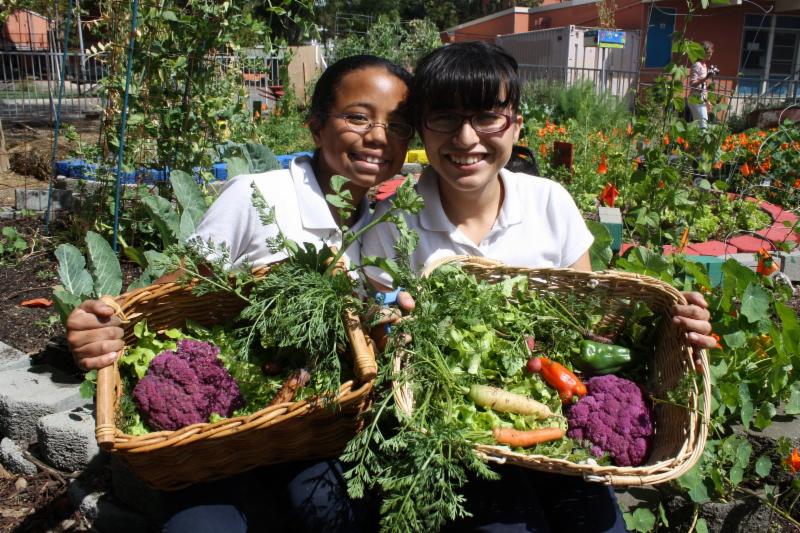 schools.
If it is not possible to have a garden at the school, consider options within the community like city parks or vacant lots, places of worship, nature
 centers, retirement centers, and community gardens.
Encourage children to share their ideas and include them in the planting of the garden. Their participation will instill a sense of ownership, pride,
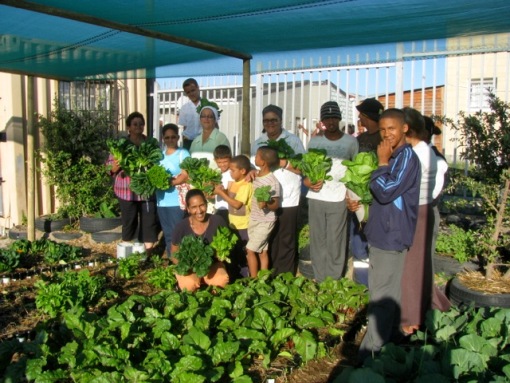 and responsibility among students. Teachers and garden leaders should provide activities that keep all kids engaged. You can get an
Extension Master Gardener volunteer in your area to help with your garden.
Step 8 - Look for Local Organic Food Groups:
Remember we are not trying to reinvent the wheel so it will be extremely important to work with local groups, garden clubs, etc., in your area that is already educating others through monthly memberships and e-newsletters.
For instance,
Natural Gardener in
Austin,
was able to supply organic seeds, organic soils, and other info my family
 needed to get started with our FIRST garden journey. I am a regular at their weekly classes. needed to get started with our FIRST garden journey. I am a regular at their weekly classes.
What I really like about this group is they have a calendar of what you should grow monthly in our area. For instance, what I should be growing in June
(click here)
.
I found this group by simply going to google.com and putting in my city and then the words "organic" and "natural gardener".
And because of this group, I will be joining a 70 year old group, Austin Organic Gardeners, who meet the second Monday of each month. Meetings are FREE. Membership dues are only $10 per year. So find these types of groups in your city, until you have enough info to break away and work with food co-ops and food coalitions to help build job's programs and create business opportunities in black communities. Rome wasn't built overnight, but it was built.
Step 9: Look for Local Health and Wholefood Stores: The goal is to eat
"nutrient-dense," "high-quality" foods, otherwise you will come down with a sickness or disease. P
eople shop at Wal-mart because it's dirt cheap - I get it! Wal-mart has put over 90% of mom and pop businesses out of business, including businesses that grows foods.
So we seriously need to figure out how we can get everyone to visit other low-cost organic venues, (such as roadside stands, etc.) or grow their own foods instead. Just remember that Wal-mart organic foods is different than foods in health and wholefood stores.
Health and wholefood stores are a good source of information for those trying to eat healthy. Remember you won't be able to grow all your foods, not in the beginning, so you will still need to buy foods from healthy, organic venues, and chances are they will be more expensive, but this food will also keep down doctor's visits. And remember with organic foods, it spoils quicker, so you will need to shop more often.
Talk to the managers and owners of these stores, who are more knowledgeable than just store clerks, about seminars, workshops, and organic food growers. Again, many of these farmers and other experts, (INCLUDING YOU), will have classes on what to grow and when to grow it.
Step 10: Gain Help from Other Resources:
USDA's People Garden website has how-to videos and databases filled with garden-based learning curricula, free seed and funding sources, and healthy gardening practices. But remember this is a self-sufficiency movement so we don't really want to depend on the government for anything.
Along with attending weekly classes at Austin Natural Gardener, I am also reading books on gardening on Amazon.com, watching gardening videos on YouTube.com and posting the really good ones at (www.CathyHarrisGardenClub.com), for you to view and educate your family. So remember your home must literally become a learning center.
So information is not hid under a rock! If you truly want to start your own garden, or gain access to local food co-ops or food coalitions, or start these your ownself, then again, start with reading my book. Good luck with your gardening journey.
Action Steps (Homework)
Your homework assignment is simply to read the book
"Overcoming Food Deserts in Your Community: How To Start A Home, School or Community Garden, Food Co-op and Food Coalition" and this e-newsletter, especially the 10 steps above, and send this e-newsletter to everyone that you know.
Also listen to the radio show above --
"The Cathy Harris Show" and the
2-hour panel discussion entitled
"Black Farmers Panel Discussion Update" on the plight of the black farmers and why their movement and ours need to merge. We will be sending out a press release soon on that merger along with a series of articles to educate you on the plight of black farmers in this country.
If we are truly working to save our families and communities, then it's vital that we all be on the same page. Remember our ultimate goals are to form
black business districts throughout the land as we
fed, clothes and
shelter our own families.
And one of the best ways to get black people, especially teenagers and former prisoners, who can't find work, especially in the summertime, involved in business ownership at this time is around growing foods. However, not everyone can start a business so we will be using food co-ops and food coalitions to start
job's programs in
urban agriculture,
farming and
gardening.
|
|
Buy This Book Now -- Read
and Study It from Cover to Cover...
This book can be read by 12 year olds and above.
This book can be a summer reading
assignment for your kids.

"Overcoming Food Deserts in Your Community: How To Start A Home, School or Community Garden, Food Co-op or Food Coalition"
by Cathy Harris
available as an e-book and paperback
Table of Contents
SECTION 1: HOW WILL YOU GAIN ACCESS TO GOOD, CLEAN, ORGANIC FOODS?
- How To Start A Home Garden
- How To Start A School Garden
- How To Start A Community Garden
- How To Start A Food Co-op
- How To Start A Food Coalition
SECTION II: LEGAL STRUCTURE AND FINANCING FOR FOOD PROJECTS
- Job and Business Opportunities
- Legal Business Structure
- Top Ways to Finance Food Projects
SECTION III: MARKETING AND MEDIA FOR FOOD PROJECTS
- How To Market Food Projects
- How To Deal With Media Entities
PREFACE - A NOTE TO THE READER
This book not only lays out several action plans to gain access to good, clean, organic foods, but it will help all family members gain access to job and business opportunities, while they eliminate food deserts in their communities.
Face it we will never get back to totally living off the land like our ancestors did, but families must come together today for the sake of future generations. We need to seriously look at solutions because this is the first generation that will not outlive their parents. However, there are economically-empowered ways we can feed, clothe and shelter our own families.
Food is not always only about the most expedient way to suppress hunger. Many community organizations have long understood this and believe that food access and quality is tied to both racial and economic justice.
Over the past few years we have heard quite a bit about food deserts, or high poverty areas where a lack of grocery stores makes it difficult for residents to purchase fresh food. However, we know far less about the food realities of people who live near grocery stores where fresh food is sold, but because of their limited
incomes, they simply cannot afford it.
Affordable healthy food is an issue of both equity and justice that disproportionally affects working-class and poor people of color in cities and rural areas. Reducing the economic necessity for some to rely so heavily on food that is unhealthy, is not only a tool for fighting health concerns, there are other benefits too.
Time and time again it shows when many schools team up with healthy venues and swap out soda machines and offer instead -- juices, water and low-sugar energy drinks and also prepared meals entirely free of additives and chemicals, but with abundant amounts of fresh fruits, vegetables and whole-grain breads, this have led to reduced behavioral problems, higher grades, lower expulsion rates, decreases in the use of ADD prescription drugs, and teachers are reporting that the students were more attentive and could concentrate for longer periods of time.
Gaining access to clean, sustainability, grown food is a basic human right so we need venues to offer education to inspire family members to live healthy lives, by offering hands-on education in urban farming, sustainability, and nutrition and this is what this book will do.

|
|
My Health Testimony
June 15, 2017
Hello from Cathy Harris:
Ten years ago at age 50, I was lying in my bed in Atlanta, GA, housebound and bedridden, riddled with pain that covered half my body for over 30 days. I debated whether to contact my two daughters who lived up north, to tell them to get ready to bury me or if I was going to fight back.
You guessed it. Obviously I fought back since I am still here! I was eating processed foods, foods that are packaged in boxes, cans, jars, and other containers, which contains pesticides and herbicides, which is a heavy metal, a neurotoxin, that causes your brain and nervous system to give out, so I had a severe case of heavy metal poisoning.
I am going to tell you a secret that I hope you will never forget! It's
heavy metals
that is causing an
avalanche of sickness today (especially diabetes, cancer, and heart disease -
the 3 largest killers in black communities)
(prescription overdose is number 4).
It's in your foods, especially processed foods (pesticides and herbicides), in the air you breathe -- in and outside of your home, and in all your body and cleaning products. I ran across this story on facebook.com yesterday (Mark Health Recovery Fund). Read it so you can see just how debilitating heavy metals can be.
It took me a year to totally remove the heavy metals from my 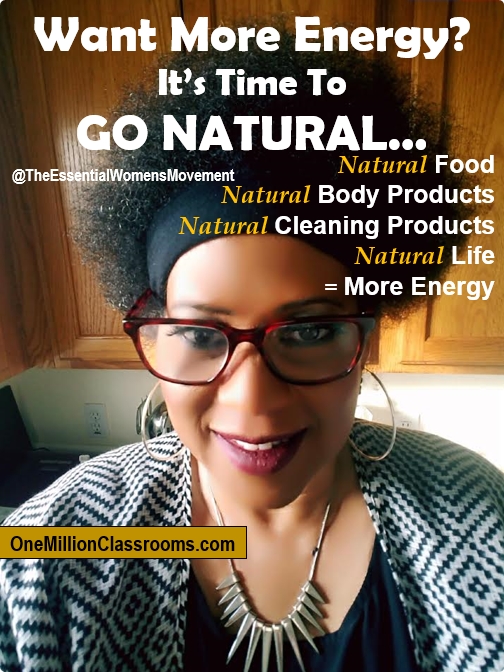 body and I did it by engaging in back-to-back detoxification programs for my colon, liver and kidneys including heavy metal detoxes or cleansers. I also did it by eating good, healing, clean, organic foods and I cleaned up my air quality in my home by using only natural body and cleaning products. body and I did it by engaging in back-to-back detoxification programs for my colon, liver and kidneys including heavy metal detoxes or cleansers. I also did it by eating good, healing, clean, organic foods and I cleaned up my air quality in my home by using only natural body and cleaning products.
GMO foods causes constipation so I am going to tell you
another secret -- unless you are having at least
2 to 3 EASY BOWEL MOVEMENTS per day, you are already walking toward disease so you need to figure out how to open up your bowels -- drink plenty of water, exercise and eat foods with fiber.
My gums, fingernails and toenails were all totally black, but yet not one of the 6 doctors that I had seen, some more than once, was able to diagnose me with any sickness. Luckily,
I was eventually able to figure it out and save my own life and became not just a holistic and natural healer, but also a National Non-GMO Health and Wellness Expert and started my own blog on GMOs.
My Childhood Story:
I grew up in rural Georgia and everything we ate came from the land -- from our gardens and fields. We had several apple, pear and peach trees, cows, mules, pigs, chickens, etc., the usual things you find on a farm.
Back then all the foods we ate came directly from our gardens and fields. And all of us, my mother, my father and 8 siblings were all able to sustain our lifestyle on the way we lived.
I thank God everyday for my upbringing because unlike most people today, I grew up living a holistic and natural lifestyle, which means I am not bl
inded about the possibilities of what we can achieve today.
Unlike when I grew up, where foods were grown directly on the land, today many foods are grown in raised beds, pots, containers, etc. A lot of the land today has been
depleted of nutrients in soils, especially because of
GMOs in our environment, therefore, we need to
grow our foods in raised beds, pots, containers, etc. so that we can control the type of soil (organic only) being used to grow foods.
There is nothing standing in our way to building these types of holistic and natural communities again throughout the land, especially in EVERY black community. However, we all need to get on the same page.
This is going to be harder said than done, however, many of us need to realize up front that we won't be able to save everyone in this
food fight, but you do need to fight for those who deserve saving,
especially Seniors, who have fought for us our entire lives,
our youth that deserve a chance to live a good life,
the disabled, including those suffering from mental illnesses caused by eating GMO processed foods, and others who
truly deserve to live a long, healthy, prosperous life.
They always said you can't really start to live your life, unless you come close to death. I do believe this is truly what happened to me 10 years ago. So everyone deserves a second chance and with this food fight that we are launching, we are literally giving families a second chance to get it right this time -- so don't squander it!
|
My First Garden Journey
by Cathy Harris
Growing our own foods is new to me, but I am up for the challenge. No...the picture above is not my garden. However, it looks identical to our garden when I was growing up.
My garden so far - is the picture below, or that's how it initially looked when my mate and I got started with it.
Being raised on a farm, this is my first garden as an adult.
At 60 years old, many people would probably be too embarrassed to admit that they are finally growing their first garden.
However, it's especially Seniors today that need to start growing their own
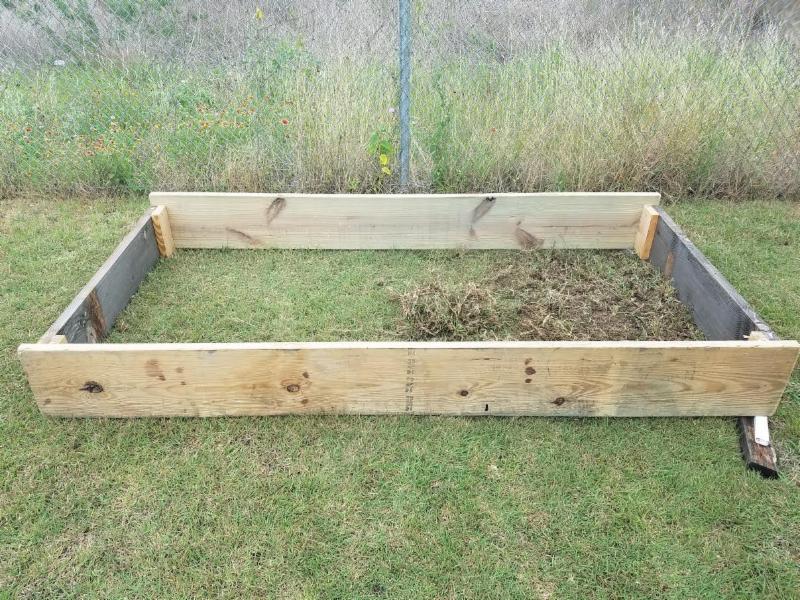 foods to make sure foods are
safe to eat; to
fight diseases; and to
cut down on grocery bills, especially as they age.
Check out this picture from my first backyard
raised bed garden. We found some plywood laying around and just put the garden together. The stick is propped under there until we can level the ground under the bed. Some people said the plywood might last anywhere from 2, to 5 or 10 years.
The dirt was hard clay and we did not want to go out and buy the right tools to dig up the garden, for instance, we could have rented a tiller from a garden center or bought a rake, but we took a short cut and used
weed barrier paper to keep the weeds from growing up in the garden, once we leveled the ground.
We also have birds and rabbits so we will be investing in rabbit repellent or putting a fence around the raised bed garden -- probably a fence. For the birds, we already bought some bird scare
tape
, which is suppose to scare the birds away.
We did not bother to
test the soil, since we knew that we would be dealing strictly with organic soils and organic seeds (or seedlings/transplants) in our
raised bed garden.
My mate has a green thumb, and as far as I know I don't, but I have never tried growing anything so who knows, you might be able to develop a green thumb as you age. I am hoping so.
So follow us on our journey to grow our own foods. Just go out to your local garden center and get some pots or containers or get some untreated plywood and put together a raised bed 4 ft. by 8 ft. or just go to
raisedbeds.com
or Amazon.com and buy these raised beds that are easy to assemble.
Another reason that many people use raised beds besides being able to control the soil content, is to get more sunlight so when you are thinking about planting these beds, keep that in mind.
The reason that many people use the measurements 4 ft. by 8 ft. is that you can reach across the garden and get something. Also with raised beds, you have the opportunity to sit down on the edge while planting your foods or invest in something for your knees.
We officially starting planting this week (the middle of June 2017) and will be keeping a record of our journey, possibly for another book down the line entitled something like
"My First Garden Journey - How I Got Back To Nature and Saved My Family and Community."
When you start planting in a raised bed, don't plant a whole bed of one thing because if pests get on your crops, they could eat the entire crop, but many times they will be after a certain food.
I am still a little confused on a lot of the information, but as I conduct more research, I become more confident. YouTube.com can be very helpful, however, it can be overwhelming too, but try to follow some of the timely and relevant shows that I have posted at my garden club "Cathy Harris Garden Club" www.CathyHarrisGardenClub.com.
Many gardeners on YouTube.com add coconut coir, peat moss, worm castings and other fertilizers to their soil to help the plants grow healthier or even faster, but as far as I know, organic soils have everything you need already in it, so all you have to do is add some type of fertilizer.
It's important to use your native soil in your area for raised beds to grow your foods. So I went to
Austin Natural Gardeners for a class and looked at
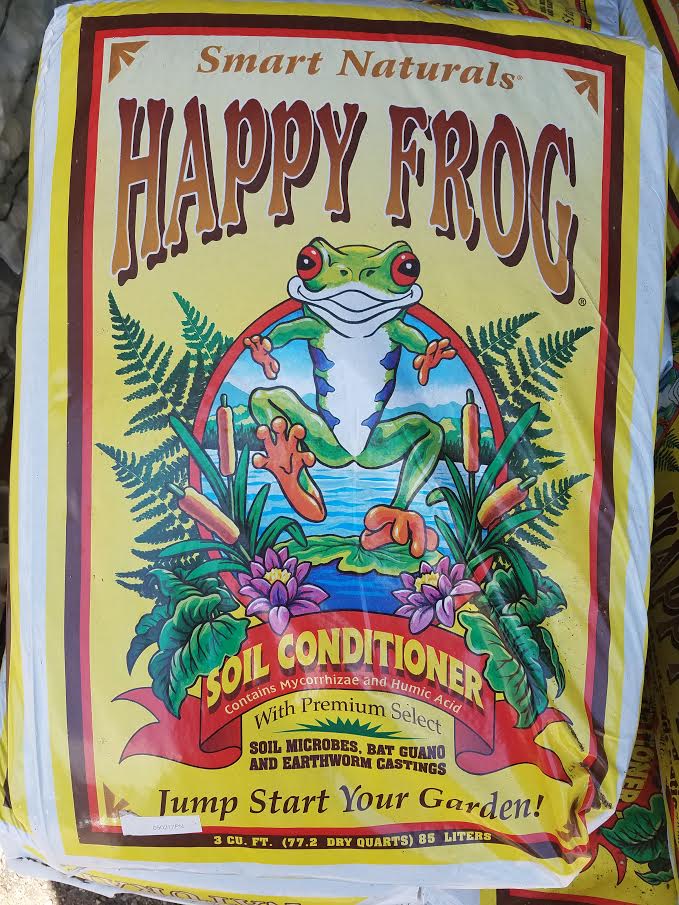 their organic soil and it was $28 a bag,
"Happy Frog Soil Conditioner." With that size of raised bed
(4 ft. by 8 ft.) you will need at least 8 to 10 bags to fill it, so that's a lot of money.
So they sent 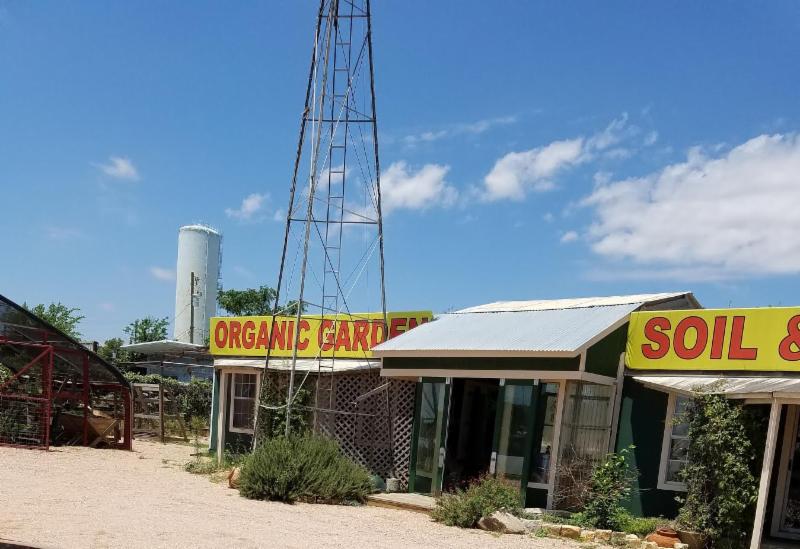 us to Austin GEO growers, who said we could bag our own organic soil for $4.65 a bag or us to Austin GEO growers, who said we could bag our own organic soil for $4.65 a bag or  just bring a truck and they would put the soil on a plastic tarp on the just bring a truck and they would put the soil on a plastic tarp on the 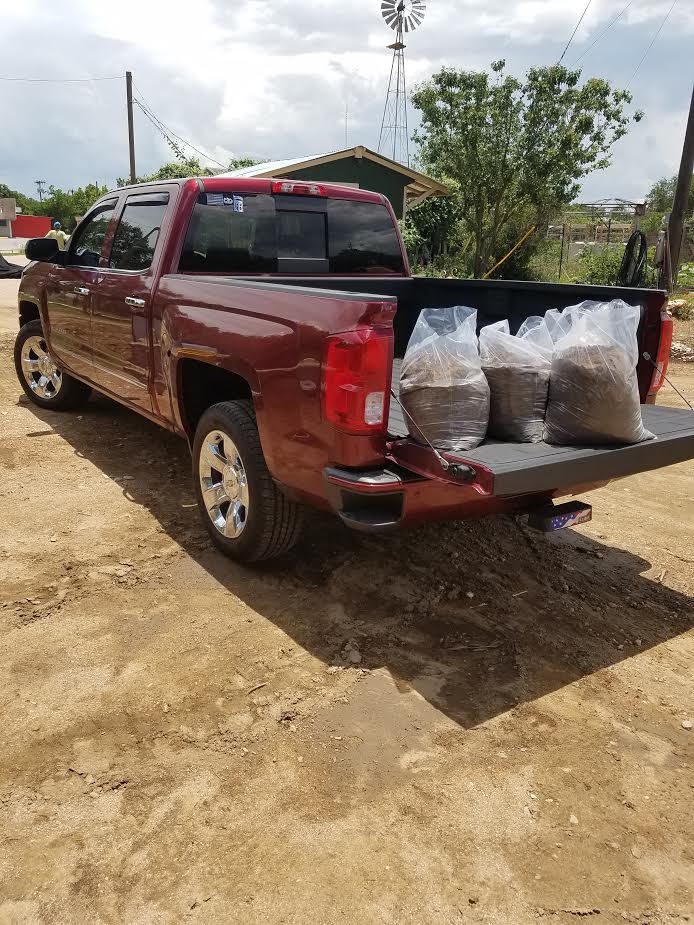 bed of the truck, and it would cost bed of the truck, and it would cost
$55.00.
They will also deliver the soil. Either of these are good deals and of course we have a truck,
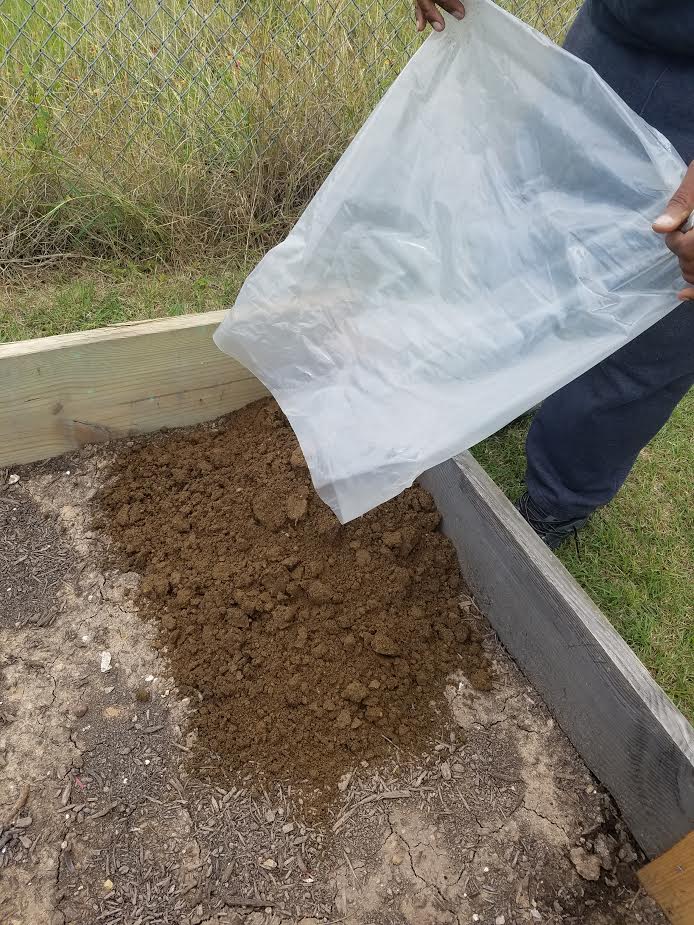 after all we are in Texas, where everyone drives trucks. after all we are in Texas, where everyone drives trucks.
As you can see below, we still did not have enough soil
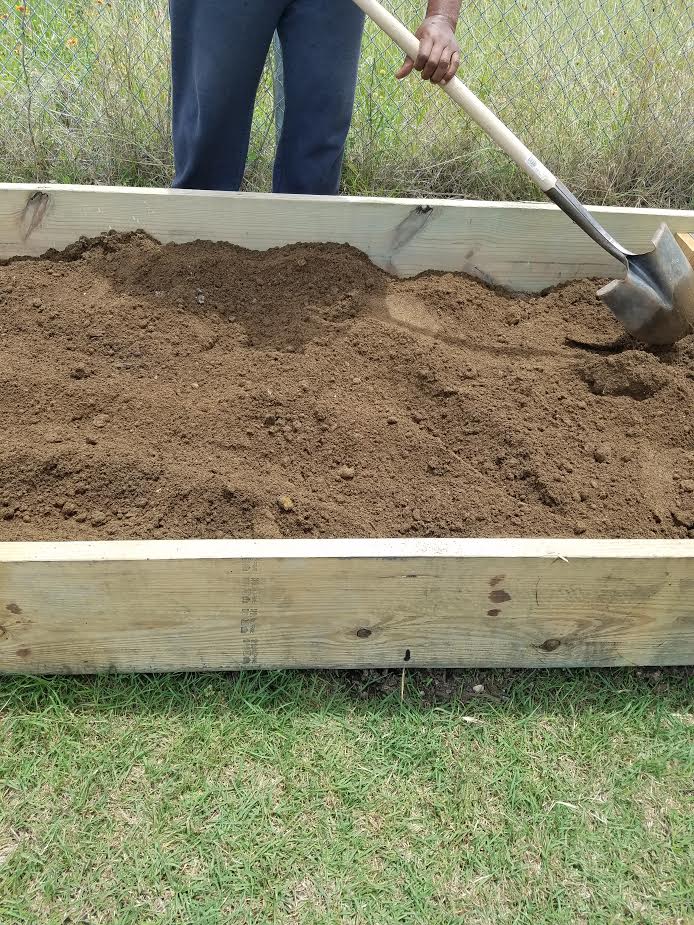 for our gardening project so we had to plan another trip to
Geo Growers.
The
4' by 8' garden is about
12 inches deep and after leveling the garden with a shovel, before putting down the soil, we put down
organic garden paper, to keep the weeds from coming back up, which is 1
00% biodegradable, which means the paper will eventually dissolve in the soil and allow the earth worms, amongst other ground creatures to come up and become a part of the soil. This is what you want to happen.

On YouTube.com many people use cardboard boxes to keep weeds from coming up in raised garden beds, but it contains glue and tape so again, we are trying to stay totally organic.
After putting down the organic garden paper, we went to Home Depot and bought 10 bags ($1.57 each at 10 bags = $15.70) 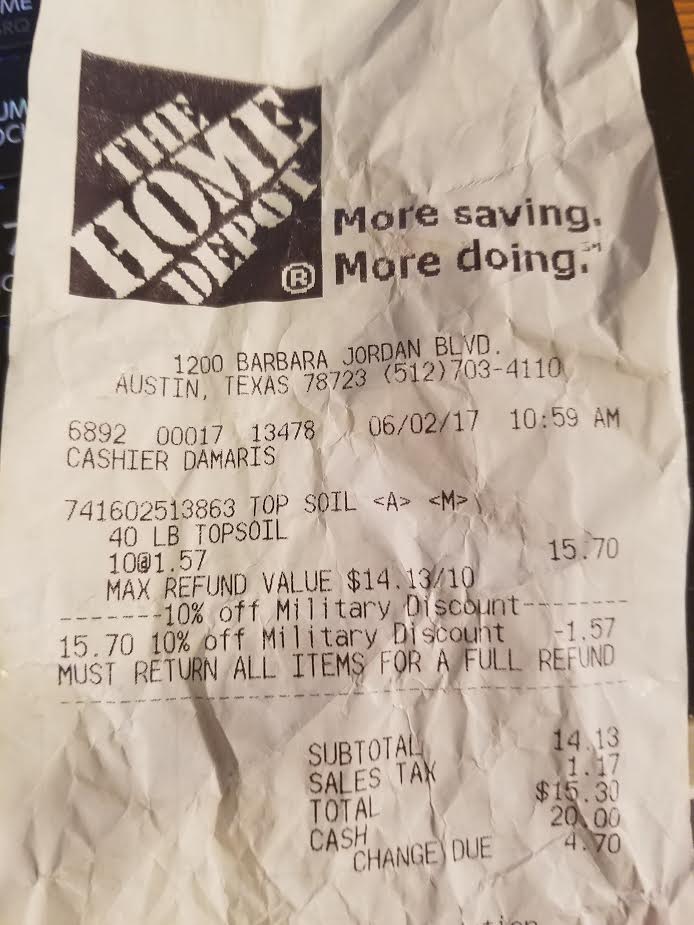 (40 lbs. total) of organic TOP SOIL to put down, which turned out to be about two inches throughout the 4' by 8' raised garden bed. (40 lbs. total) of organic TOP SOIL to put down, which turned out to be about two inches throughout the 4' by 8' raised garden bed.
We did not really need to use Top Soil, 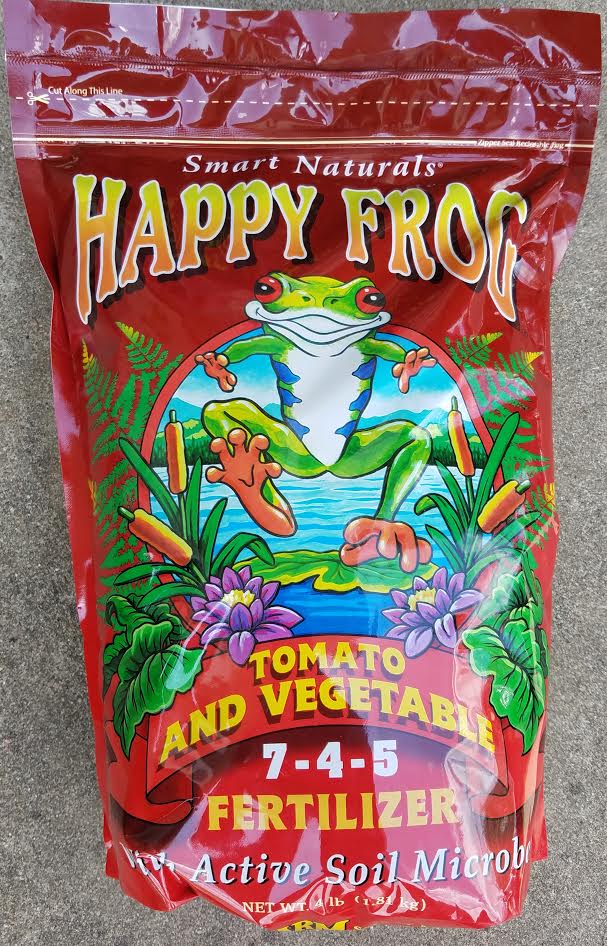 but many people do use two different soils in their raised beds. Just make sure both are ORGANIC. We could have just used the organic soil from GEO growers throughout the bed and add a fertilizer before planting. We used the Happy Frog Tomato and Vegetable 7-4-5 Fertilizer on our raised bed. but many people do use two different soils in their raised beds. Just make sure both are ORGANIC. We could have just used the organic soil from GEO growers throughout the bed and add a fertilizer before planting. We used the Happy Frog Tomato and Vegetable 7-4-5 Fertilizer on our raised bed.
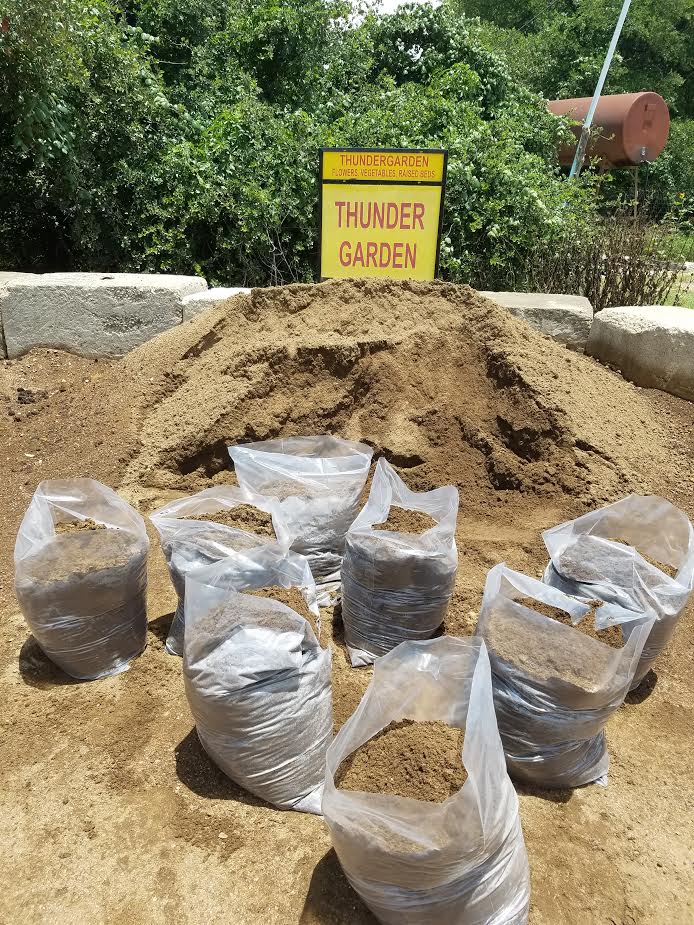 On our first trip to Geo Growers, we
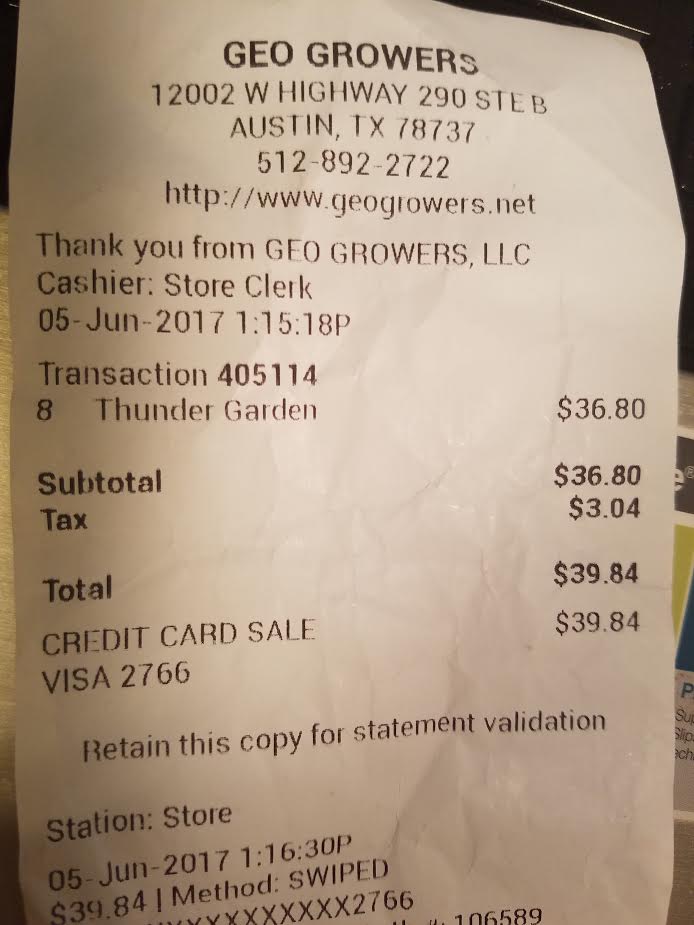 bought 8 bags for $39.84 so we had to go back and get another 8 bags. The bags were much smaller than I thought.
They also had thunderdirt for small trees, shrubs, native and xero scapeplants, double thunder, turf topper, geo tree mix, poultry compost, and
 magic mulch, but we bought
Thunder Garden soil for flowers, vegetables and raised beds.
My mate was quite surprised and complimented me for finding the place. He does all the yard work, but when I got serious about growing our own foods, I was all over Austin trying to learn the process so this is a project that the both of us are working on together.
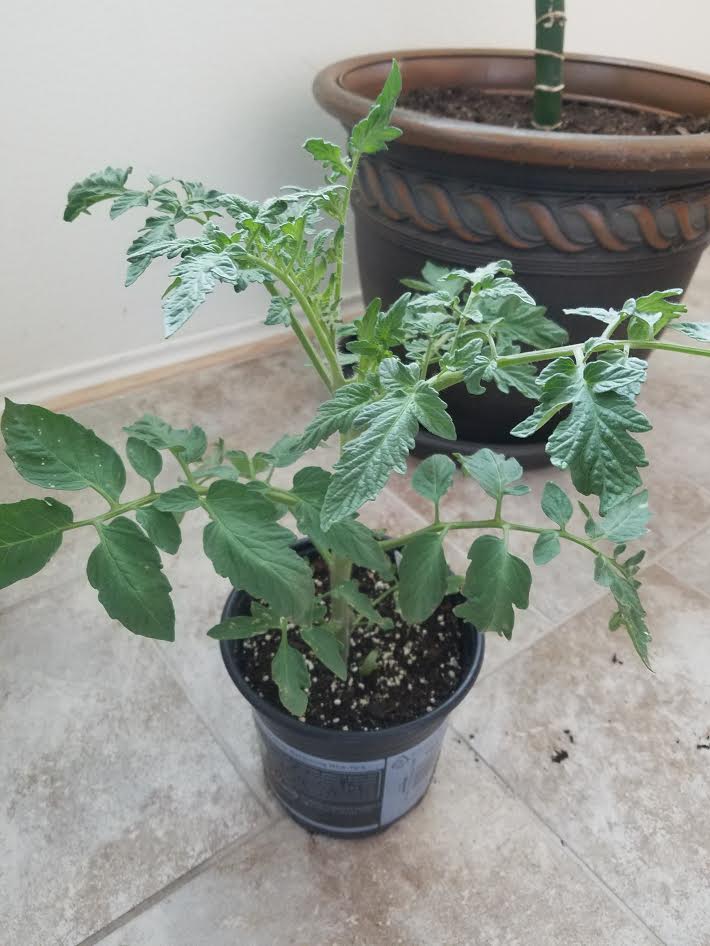 After saying he did not want any foods growing in the house, I
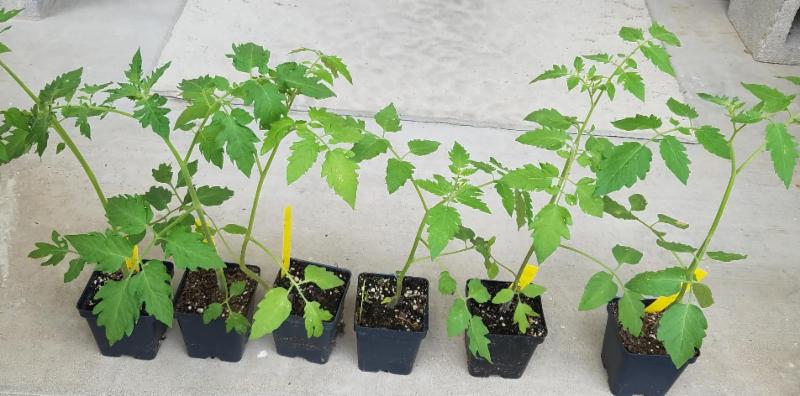 went downstairs the other day and saw that he had bought a tomatoe plant so looks like this is definitely rubbing off on him. He was preparing to plant the tomatoe plant in this big pot outside so I surprised him with several other smaller, organic tomatoe transplants (6 total at $1.69 each) that I bought after a class, to include in the large pot.
Couples have to
agree to disagree on how and where to grow foods. This is not just for the betterment of the community, but it's especially for the betterment of the family. So hopefully couples can get on the same page when it comes to growing foods.
I am excited about growing my own foods and will report back to you guys with any progress.
Since most of my foods that I eat for my blood type diet are the green leafy "nutrient-dense"
greens, which grows in September (in colder weather), if for some reason the foods that I planted now are still growing, when I prepare to plant the crops for September, we might need to look at building our second raised bed - what a dilemma to 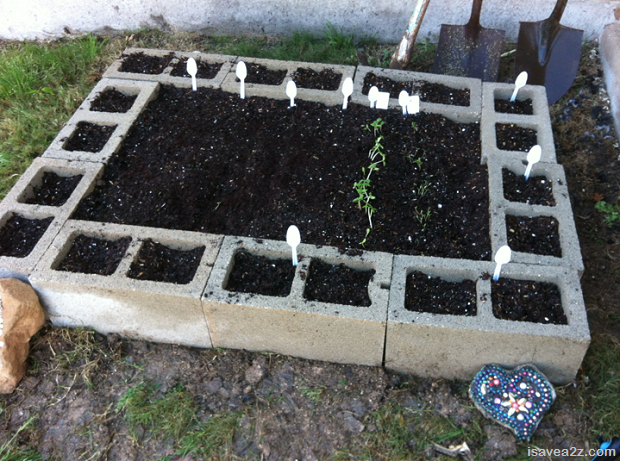 have. have.
I was surprised to see that my mate had went out and built a smaller raised bed garden made out of cinder blocks (sample garden on right), next to the other 4' by 8' raised bed garden made out of plywood, for the 7 tomatoe plants, instead of putting them in the big pot. You can actually build these raised bed gardens out of anything, so conduct your research.
Again, this is really rubbing off on him and many people are telling me that their neighbors are starting to grow foods, especially in raised beds, pots and containers -- simply because they are growing foods. So growing foods is contagious!
 Packets of seeds only cost $1.99 to $3.99 with many seeds inside the packet, but make sure they are ORGANIC. And the back of the seed packets contains instructions on how to space the seeds (most said to space seeds 4 to 6 inches apart). Some seeds, like the New Zealand Spinach, you might have to soak for 24 hours before planting. Packets of seeds only cost $1.99 to $3.99 with many seeds inside the packet, but make sure they are ORGANIC. And the back of the seed packets contains instructions on how to space the seeds (most said to space seeds 4 to 6 inches apart). Some seeds, like the New Zealand Spinach, you might have to soak for 24 hours before planting.
The goal is when starting out, you don't want to overwhelm yourself so we just planted on June 14, 2017 in our FIRST raised bed garden rows of honeydew melon, cantaloupe, watermelon, pepper, cucumber, New Zealand Spinach, and Swiss Chard. We also have 2 citrus We also have 2 citrus 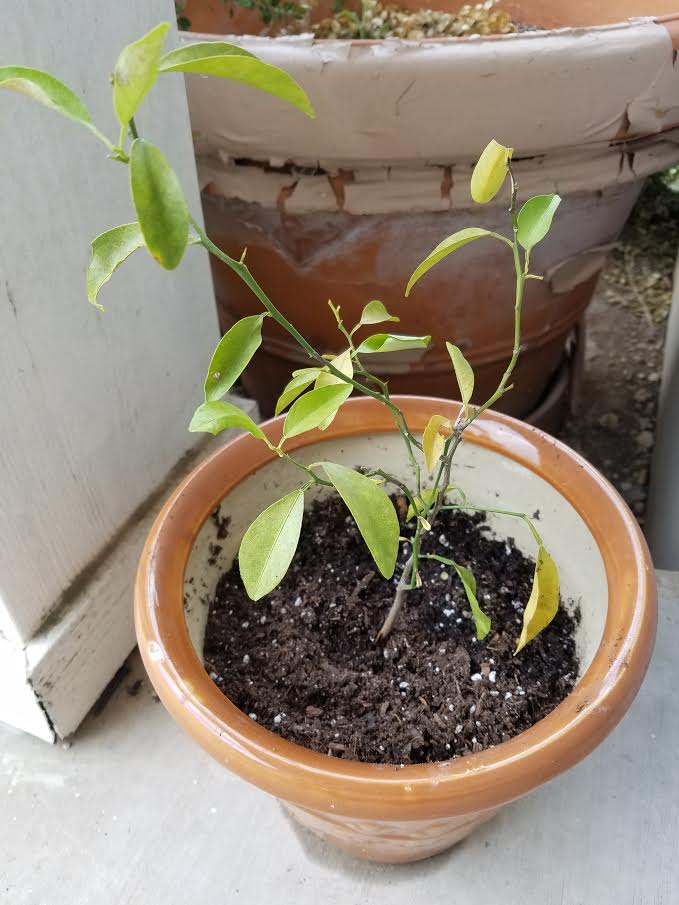 fruit trees (a lemon and tangerine tree) in pots on the back porch. fruit trees (a lemon and tangerine tree) in pots on the back porch.
I chose the foods (or seeds) because Natural Gardener recommended them for growing foods in June and they fitted my blood type diet.
The trainer in the class burst my bubble the other day when she told me that Austin has two SHORT growing seasons instead of two LONG growing seasons. I thought simply because we lived in a hot climate (hot and hotter), we could grow foods all year, but she said NO -- and that we would be lucky  if the foods we plant don't bolt on us from the extremely hot temperatures. What an eye-opener! So if you live in a region with a "long-growing" season, like my last state, Georgia, you are so lucky...so take advantage of it. if the foods we plant don't bolt on us from the extremely hot temperatures. What an eye-opener! So if you live in a region with a "long-growing" season, like my last state, Georgia, you are so lucky...so take advantage of it.
We finally had enough soil for the garden so this is how it looked before planting. So now all we need to do is sit back -- water it -- and watch it grow.
So the steps for our first raised bed garden included:
-Made the 4' by 8' raised bed out of plywood (another one out of cinder blocks).
-Leveled the ground with a shovel (but you can rent a tiller from a garden center or use a rake).
-Added biodegradable garden paper.
-Added Top Soil (2 inches across).
-Added Thunder Dirt from GEO Growers.
-Mixed in Fertilizer (Happy Frog Tomato and Vegetable 7-4-5 Fertilizer).
-Added seeds (Selected seeds for our region and the foods we were already eating)
-Water regularly and wait for garden to grow
-Eat good tasting, "nutrient dense" foods
-Live a long, healthy life while you grow foods that are safe to eat, fight diseases while you cut down on doctor's visits, cut down on grocery bills, etc.
-Get your family, friends, neighbors and colleagues to do the same, while you help build a "brain-healthy" community.
I hope this e-newsletter and especially this session, have allowed you to expand your level of thinking, and now you know beyond a shadow of a doubt, that you too can grow your own foods, especially in raised bed gardens.
Now you guys know as much as I do about growing foods in raised beds, especially those of you starting out.
I also spoke with a lady who was renting her home, who had 100 pots and containers so that is very encouraging so if you don't want to do a
raised bed garden or get your soil tested and plant foods in the ground, just use pots and containers to grow your foods on
porches, patios, balconies, rooftops,
in kitchens, etc. -- again "
the sky is the limit!"
The goal is to have fun growing your own foods and don't forget your new motto
Self, Family
and
Community
- in that order ONLY.
Cathy Harris, Speaker, Author, Coach
National Non-GMO Food Expert
Cathy Harris Garden Club
P.O. Box 19282
Austin, TX 78760
(512) 909-7365
|
June 15, 2017
Hello Sistars:
I hope this e-newsletter is just what you needed to get your health to a better state. What I did not mention above in my health testimony, is that it was a black woman, a
Sistar, a nurse who I meet at Wal-mart, that diagnosed me with heavy metal poisoning -- just by looking at me.
So therefore, it's important that black women come together for the greater good of the community and work together to try to help each other move forward. We will continue to post e-newsletters with action plans on
health, business and
community as we start teaching by videos.
Again monitor the
website for the updates of the NEW
Masterminds, Think Tanks and
Classrooms phone and video training sessions starting on
Tuesday, July 18, 2017, 7:00-8:30 p.m. (CST) and join us for our conversations on
facebook.com.
Meanwhile, stop being selfish and share this e-newsletter with others that are truly looking for the answers to life. Help them figure out their next move. Remember when one of us win in the game of life, we all win.
Sincerely,
Cathy Harris
Your Sister in the Struggle...
Love you...
Join A New Positive Movement
for African American
Women
"The Essential Women's Movement for African American Women"
Facebook.com page - Join Now
Facebook.group - Join Now
Meetup.com group - Join Now
Websites:

10 Health Action Steps for
"The Essential Women's Movement for African American Women"
Cathy Harris Launches "The Essential Women's Movement"
FIRST ACTION STEP for "The Essential Women's Movement"
How To Gain Access to Good, Clean Organic Foods
SECOND and THIRD ACTION STEPS for "The Essential Women's Movement"
(Valentine's Day Editions)
Create a New Healthier Holiday Tradition
& What Single Women Need To Stop Telling Themselves
About Relationships
FOURTH ACTION STEP for "The Essential Women's Movement
What You Need To Know About Vaccinations
FIFTH ACTION STEP for "The Essential Women's Movement"
What You Need To Know About GMOs
SIXTH ACTION STEP for "The Essential Women's Movement"
Food Allergies vs. Environmental Allergies
SEVENTH ACTION STEP for "The Essential Women's Movement"
What You Need To Know About Diabetes
EIGHTH ACTION STEP for "The Essential Women's Movement"
What You Need To Know About Cancer
NINTH ACTION STEP for "The Essential Women's Movement"
Know Your Numbers and Save Your Life
TENTH ACTION STEP for "The Essential Women's Movement"
How To Get Off All Medications
Community Action Steps
FIRST ACTION STEP for "The Essential Women's Movement"
Report Back and Action Plan for Dallas, TX
SECOND ACTION STEP for "The Essential Women's Movement"
The Truth About Black Communities
Business Action Steps
FIRST ACTION STEP for "The Essential Women's Movement
Are African Americans Wired for Business Ownership?
|
|
|
Cathy Harris New Products
Last message and I am done talking:
Do you see how things work out? In late May or early June 2017, after spending 8 months in Dallas last year, I was suppose to move to Columbus, OH for 5 to 6 months to work with the people of Columbus, which I will still be doing in August - October 2017 of this year.
There is no way I would have been able to release this campaign around my book release, if I had moved to Columbus, OH, or did the show with the Black Farmers and decide to merge with them...so everything happens for a reason in your life. Sometimes people come into your life for a reason or season, so value the people who come into your life -- even relationships.
After releasing this new food project and campaign, and the women's movement in January of this year, my goal is to be more hands-on with the community, and my clients and customers and start my video training series.
For the last two years, I did not even have e-commerce on my old website and I had to wait online an hour for customer service with my hosting company. That was ridiculous. With my new hosting company, they pick up within 1 to 2 minutes. Now that's how business is suppose to work.
You know I love to write, but I am trying to get away from writing unless I am working on books. I will spend less time writing articles, e-newsletters, blogs, etc. and more time creating products for my business and working on future books and in my consulting/coaching services.
I am so proud of myself over the last few weeks. Not only did I finish up my 24th non-fiction book, but I also published another website, launched a national campaign, while educating myself on how to grow foods.
Again, I don't watch TV! So I learned how to publish the Wordpress website and how to grow foods by turning my home into a
learning center
-- by using my Smart TV to watch YouTube.com, read books (ebooks, paperbacks and audiobooks), watched webinars and listened to teleseminars online or by phone and attended several local classes on Wordpress and gardening.
I did the same thing that I am telling you guys to do.. in order to empower yourself and your family. It's not rocket science, but you do need to be dedicated and committed to the process. You have to give up something to get something else.
When you want something bad enough, there is always a way of getting it, even at 60 years old. My website and what I am doing now should take me through the next 20 years of my life, but I am looking to pass my knowledge on to
Millennials,
Generation X's, and other Baby Boomers, especially in my workshops, seminars, webinars/teleseminars and coaching sessions (printed copy).
I still enjoy traveling and should be in 3 cities this year holding events - Brooklyn, NY, Columbus, OH and Philadelphia, PA. Next year I should be in Orlando, FL, Charlotte, NC and Washington, DC. So check out my upcoming events for our new campaigns/movements.
I am also gearing up to teach one-on-one GMO education through my webinars.
After speaking on GMOs for 10 years, it's just time to take the
GMO food fight
to another level. In my 10 years of speaking on GMOs, I have only met a handful of
African American GMO speakers
, even when black speaker's topics included
fitness
and
health
.
You can't discuss fitness and health if you are not discussing GMOs. I am simply tired of being the ONLY black GMO speaker in the room, so this too is another reason I decided to launch this new national food project around my new book release, and join the black farmers movement. We all need to come together and educate the black community on GMOs, and who knows more about GMOs than the black farmers.
For those of you who have been with me from the very beginning and enjoyed my e-newsletters, articles, blogs, books, and my DearCathy.com forum over the years, surely you realize that I conducted extensive research to bring this wonderful information to you.
I hope you will choose to work with me on a deeper level, and purchase my products below for your family, friends, neighbors and colleagues and inform others about our ethical, timely and relevant services and products -- especially the new book release, new national food project and new movement for African American women.

Downloadable Webinars - $4.99
Downloadable Audios - $2.99
E-Articles - $4.99
Coming Soon as PDFs, Audios or Webinars
- 7 Steps To A Beautiful Smile
- 7 Steps To Beautiful Skin
- How Much Water Should You Drink Daily and What's the Best Type of Water to Drink?
- What Are The Best Vitamin and Mineral Supplements To Take?
- Why You Need To Exercise
- How To Establish Good Sleeping Habits
- How To Turn Your Brain Back On and Stop Depression
- What You Need To Know About Your Thyroid
- What You Need To Know About Yeast
- Why Women Need to Lose Weight or Keep a 35 Inch or Smaller Waistline
- Why Chicken is Bad for You and The Best Type of Meat to Eat
- Why Juicing Foods Is Good for You
- How To Create Your Own Speaker's Tour
- How To Create Your Own Public Relations (PR)/Marketing Company
- How To Stop Racial Profiling and Police Brutality and much, much, more...
|
|
Are You Ready to Make
Your Dream Come True of
Writing A Book?
How To Write A Book: The Complete Guide
To Writing and Publishing Your Own
Paperback and E-book
Available as E-book, Paperback & Audiobook
|
|
|
Sample Audiobook - How To Write A Book by Cathy Harris
|
Audiobook Available at:
Itunes.com
Available as E-book and Paperback
|
Cathy Harris List of Books
Books can be read by
12 year olds and above...
|
|
Find Cathy Harris on Social Media
Join Cathy's Groups on Facebook.com
Join Cathy's Meetup.com Groups
All Books are Available at AngelsPress.com
Brought To You By
AngelsPress.com
Cathy Harris
Empowerment and Motivational Speaker,
Non-GMO Health and Wellness Expert, Advice Columnist at DearCathy.com, Self-Publishing and Business Coach and author of 24 non-fiction books at
Cathy Harris, Speaker, Author, Coach
Angels Press, CEO, President, Publisher
P.O. Box 19282
Austin, TX 78760
(512) 909-7365
(Seminars, Workshops, Coaching)
(Empowerment & Publishing Company)
(Advice Columnist)
(The Cathy Harris Story)
"We Can Sit Back and Watch As the World Goes By
or We Can Find Opportunities To Make It Better."
....Cathy Harris
Send This E-newsletter to
Everyone You Know
|
|
|
|
|
| |
|